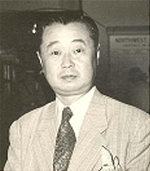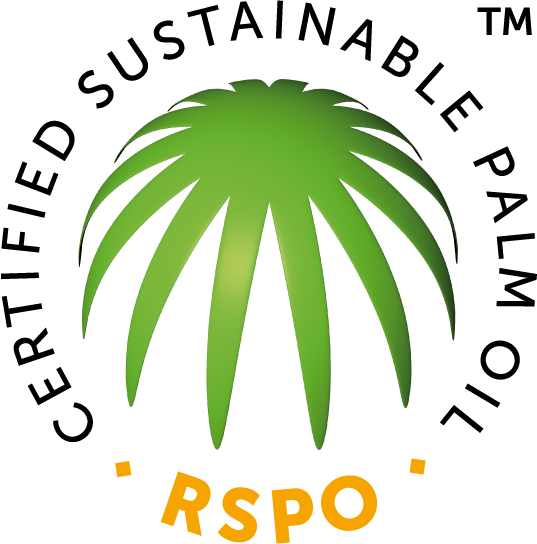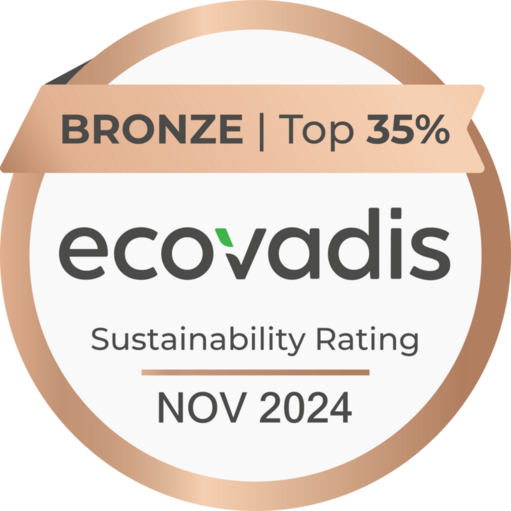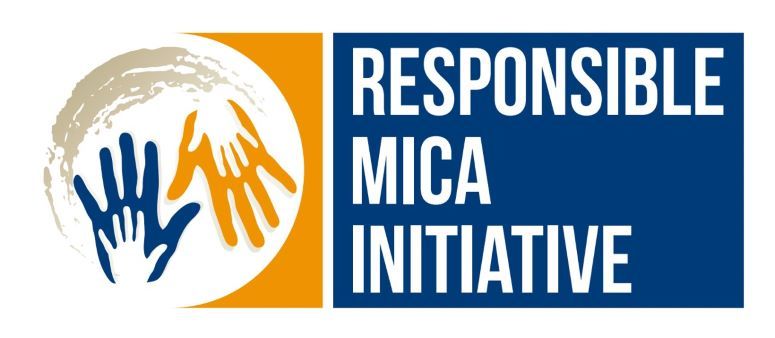Our company
Company history

Tokyo Bunrika University's Okubo Annex was built at Shinjuku, Hyakunincho, 4-400 shortly after the war. This was the site of the former Army Institute of Technological Research, Laboratories. The two-story red-brick Taisho era (1912-1926) building and the buildings surrounding it escaped seizure by the occupying army and still contains bullet holes from incendiary bombs. It was in these buildings that the first Japanese research into synthetic pearlescent pigments began.
The vast site of the former Army Institute of Technological Research has played host to various research facilities, including Tokyo University of Education's Institute for Optical Research, the Institute of Geological Research, the Institute of Silk Yarn Research, and Tokyo Metropolitan Institute of Public Health. The site is enclosed by an embankment that is over three meters tall and covered in luxuriant Japanese arrowroot. It feels like a completely abandoned building. The Okubo Annex was reorganized in 1949, becoming Tokyo University of Education's Affiliated Institute for Optical Research. It is the only optical research laboratory in Japan.
In the very beginning, the institute conducted research into fish scale foil, made from purified pilchard scales. The research was completed after about a year but it yielded insufficient information. By that time, imitation pearl made from hairtail fish scales had already been produced domestically. As there were also issues with the decreasing size of fish hauls, this research was abandoned and, inevitably, a new direction had to be taken.

Professor Yoshio Fujioka |
|

Professor Sei Hachisu |
|
After the war ended, Yoshio Fujioka, the Director of the Institute for Optical Research affiliated with Tokyo Bunrika University (later Tokyo University of Education), decided that Japan urgently needed to acquire foreign currency for trade. His judgement resulted from investigation into various research areas connected to Japan's recovery. Fujioka began researching into and developing pearlescent pigment, which is the raw material for artificial pearls, and appointed Sei Hachisu as his assistant (at the time). By researching the properties of fish scales, Hachisu discovered the necessary conditions for pearl pigment. He began researching and developing chemical compounds that would satisfy these conditions.
In 1946, Sei Hachisu, Tadashi Miyazaki, and their team established a method for producing fish scale foil by purifying pilchard scales. In March 1949, the same team successfully generated crystallized lead thiosulphate to create Synthetic Pearlescent Pigment Mark One. As this product was received to great acclaim by the imitation pearl industry, the then Chairman of the Imitation Pearl Industry Association Wakanobu Yoneda recognized the need for these results. Collaborative research into pearl foil was proposed and a request was made for financial support. However, the Mark One Foil had poor light stability and was never put into practical use. The Mark Two Foil was made from barium thiosulfate. However, its luster was not bright enough and it was not possible to use the Mark Two as a pearlescent pigment either. The research team members were Akira Kose, Satoshi Shiohara, Tetsuya Ichimaru, and Tsunehiro Odaka, working under the direction of Hachisu.
The reserach team was extremely constrained by time and financial resources but, with determined resolve, they embarked up their next research project. By looking into lead compounds from the perspective of refractive indexes, the team discovered a method of precipitating crystals for the Mark Three Foil (lead carbonate basic foil). In 1951, they gained subsidies from the Ministry of Education, Culture, Sports, Science, and Technology and began to investigate how they would mass produce the product. The following year, they established and developed an interim pilot plant. In just over a year, the team achieved their original objective. After that, Seiichi Mori and Kichio Igawa joined the project in quick succession.
| 1954 | Awarded Okawachi prize |
|---|---|
| 1954 | Applied science research center was established. |
| 1955 | Nihon Koken Kogyo Co., Ltd. was established. |
| President | Koji Nagaoka (ex-president of Matsukaze Toki) |
|---|---|
| Sr. Director | Kan Kose (ex-researcher of Applied science research center) |
| Director | Koichi Katagiri (Vice president of Asahi Kasei Kogyo) |
| Director | Ryuichi Yoneda (President of Yoneda Wakamatshu Shoten) |
| Councelor | Professor Yoshio Fujioka (Professor of Tokyo Education University) |
| Auditor | Hachitaro Shimabara (President of Yoshimi Sangyo) |
| Advisor | Professor Akio Otsuka (Professor of Tokyo Education University) |
| Advisor | Professor Ren Hachisu (Professor of Tokyo Education University) |
| Capital | 8 million yen |
|---|---|
| Investor | Asahi Kasei Kogyo, Yoneda Wakamatsu Shoten, Applied optics research institute |
| Address | 2487 Shimura-nakadaicho, Itabashi-ku, Tokyo |
Nihon Koken Haku(product name) production and sales was started.
Company history
| Year | Month | Company history |
|---|---|---|
| 1955 | Nov. | Founded in Itabashi, Tokyo at a capital of 8 million yen |
| 1960 | Nov. | Osaka offce set up |
| 1963 | May | Company history |
| 1964 | Aug. | Tokyo office set up |
| 1965 | Feb. | Nihon Pearl Paper Co., Ltd. founded to produce and sell pearl processed paper |
| 1968 | Sep. | Capital increased to 70.085 thousand yen |
| 1968 | Sep. | Nihon Polymer Co., Ltd. founded by joint investment with Asahi Chemical Industry Co., Ltd. |
| 1980 | Sep. | Our pearlescent pigment had been adopted for the first time as the paint of TOYOTA 'CROWN' automobiles in Japanese market. |
| 1984 | Sep. | Artificial opal manufactures and sales initiated |
| 1985 | Feb. | Manufactures and sales of cosmetic materials initiated |
| 1992 | Sep. | Factory for the development of new products established |
| 1994 | Aug. | Additional cosmetics factory constructed |
| 1997 | Dec. | The trade name of Nihon Pearl Paper Co., Ltd. had changed to Nippal Co., Ltd. and cosmetic materials sales initiated |
| 1998 | Jan. | Synthetic mica-based pearlescent pigments manufacture and sales initiated |
| 2000 | Apr. | Factory for Infinite color pearl pigment established and sales initiated |
| 2002 | Apr. | IOS-9001 certification acquisition (JAB/UKAS) |
| 2005 | Manufactures and sales of GENESTER® initiated | |
| 2006 | Manufactures and sales of Hifeset initiated | |
| 2010 | Manufactures and sales of TWINCLEPEARL® initiated | |
| 2011 | Manufactures and sales of SILSEEM® MistyPearl and Silture Grasense inisiated | |
| 2014 | Dec. | Manufactures and sales of FANTASPEARL® initiated |
| 2016 | Feb. | Manufactures and sales of NK-G initiated |











